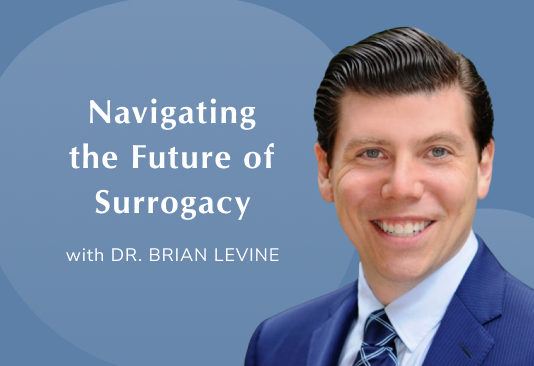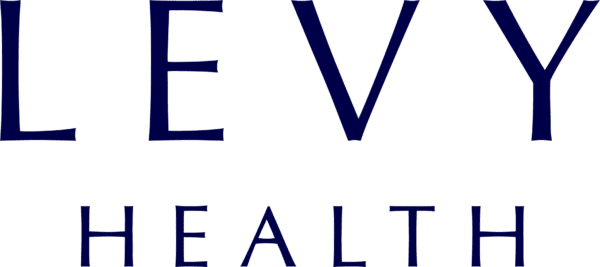



About Dr. Brian Levine
Dr. Brian Levine is the founding partner and practice director of CCRM Fertility of New York and the visionary behind the surrogacy platform Nodal. He discussed with us how, as an REI, he has devised a fresh approach to the surrogacy workflow from a doctor’s viewpoint while ensuring his key performance indicators are competitive.
LEVY Health
Why should I consider Nodal over traditional agency broker systems for surrogacy?
Dr. Brian Levine
One of the major differences with us is that we actually let the surrogate, the woman taking the most risk, make the first move. This sets us apart from every other agency in America, where a surrogate is typically assigned to a family or parent. We allow the gestational carrier or surrogate to choose who she wants to work with, promoting empowerment and agency throughout the process.
From a business standpoint, we’ve integrated technology into our workflow that enables efficient review of the records of the gestational carrier or surrogate. This allows us to reduce the costs associated with reviewing medical records and recruiting surrogates. Because of this, we have the industry’s lowest customer acquisition costs for surrogates, and we pass those savings directly on to the intended parents.
LEVY Health
Given the clear advantages of a digital approach and increased surrogate involvement in the surrogacy process, it’s surprising that these aspects haven’t become industry standards until now. How do you explain the survival of a system that’s evidently flawed and costly for such a prolonged period?
Dr. Brian Levine
Winston Churchill said the best democracy is the best worst alternative. And I think the current state of surrogacy in America is the best worst alternative today. It’s the only country that provides legal protections to ensure a safe, reliable, well-documented, and legally responsible relationship between a gestational carrier and an intended parent. However, due to the absence of market pressure and the dominance of supply and demand economics, there’s been no incentive for agencies to modernize or enhance their current services. Consequently, no one has been motivated to improve the system because it’s highly profitable as it is. But there’s a problem here. And the problem is that I’m a doctor, and I’m solving a doctor’s problem. I’m the one who sits in front of patients everyday who cry, who say they can’t afford to grow or complete their family. I’m the one who has traditionally been referring people into traditional agencies. And as a result, I was complicit with the entire problematic system. So as the father of two little daughters, as someone who believes in teaching a lesson to their family, I decided to identify a problem and to figure out a solution.
LEVY Health
Doesn’t a lot of demand and high profitability apply to IVF in general?
Dr. Brian Levine
I don’t think so. In contrast to IVF, surrogacy is still in its early stages. It hasn’t attracted the level of private equity investments, McKinsey analysts, or Goldman Sachs valuations that IVF has. Surrogacy is still largely operated as a mom-and-pop industry, which is why it’s ripe for disruption.
What’s astounding to me is that the first surrogate in America received around $25,000 for her surrogacy journey in the 1980s, equivalent to roughly $95,000 today. However, no surrogate in America today receives more than $55,000, with most agencies offering around $45,000 to $50,000. This economic disparity indicates that the industry is at a turning point.
LEVY Health
If you were able to make one major change about the IVF industry, what would it be?
Dr. Brian Levine
You don’t pay if you don’t get a baby. Clear answer.
LEVY Health
I’d like to dig a little deeper into how you use technology. As you know, at LEVY Health, we’re all about the top of the funnel and making sure that physicians get to see those couples who really need and want artificial reproductive treatment. How have you changed the approach to the top of the funnel? And how do you use technology for pre-screening and the triaging of surrogates?
Dr. Brian Levine
I love the conversation about the top of the funnel, and I think LEVY Health is one of the most important solutions when it comes to access to care. At Nodal, the top of the funnel is such an important topic because we tackle three funnels every day: the people looking to use a surrogate, the people who want to be a surrogate, and the clinic who has to accept the surrogate itself. So let’s look at each one individually.
First, the intended parent. We do not spend money on marketing to attract intended parents. We believe that all the dollars invested in this company should go directly into resources to improve the safety, the efficiency and efficacy of our workflows. So we spend a lot of time and effort talking about ethics and safety on social media, in interviews like this one, and at conferences. This has earned us more than 1,500 parents who have signed up to use Nodal.
Secondly, regarding surrogate recruitment, traditional agencies spend over $10,000 per candidate. We’ve streamlined this process through technology, reducing costs to under $3,000. Our use of A/B testing and messaging refinement has boosted our conversion rate from ad click to platform engagement to 3.5%, compared to the industry standard of 0.5%. We’ve fostered a community-centric approach, facilitating connections between experienced surrogates, future surrogates, and intended parents through platforms like Facebook and community events.
The last part of this is the clinic, and this is where we have a competitive advantage not because of technology but because I’m a doctor. I have the phone number of each practising REI in the country on my phone, and instead of spending a lot of money on marketing and business development, I call them and tell them about Nodal and how to cooperate.
LEVY Health
How exactly do you use technology for pre-screening and triaging applicants?
Dr. Brian Levine
We use decision trees, but we don’t allow a computer or an AI engine to just run something to figure out who’s the right surrogate. Our algorithm allows us to build a screening profile. So in a matter of minutes, we can assign a risk tolerance score to figure out if this is someone who is worth reviewing. If someone has a history of four miscarriages or preeclampsia in a prior pregnancy, we won’t consider them as a surrogate. Approximately 50% of women who complete our online questionnaire meet our qualification criteria to proceed further.
LEVY Health
Which additional steps do you take to ensure both the physical and emotional well-being of surrogates throughout the journey?
Dr. Brian Levine
We talk, we screen, we evaluate, we refer, but at the end of the day you have to remember that all liability in surrogacy rests with the clinic. The individual performing the embryo transfer carries the most significant risk in the relationship. Ultimately, the clinic is responsible for approving and proceeding with a surrogate. We conduct screenings more rapidly than anyone else in the industry, relying on our clinical partners to make the final decision on whether to proceed with the surrogate.
LEVY Health
Do you think a fertility doctor, specifically you and your team, is the best choice to coordinate and provide surrogacy services? If so, why?
Dr. Brian Levine
As a doctor, I am fixing a doctor’s problem. I believe strongly in protecting and preserving the patient doctor relationship whenever possible. I think that I am well positioned and well educated, and in the right role today as the leader of this company, because I care so deeply about making sure that we do no harm.. I have three customers at every given turn of this company at all times. We are a highly efficient eight person team that is completely remote, that is able to help people have babies – full stop. No agency in America that has eight people is charging what we’re charging. They charge $100,000 for what we charge for $20,000. They take 18 months for what we do in 45 days. And I think that’s a complete function of me as a doctor, where I recognise my own limitations. I can’t treat the whole city of Manhattan, but I can build an ecosystem that allows us to scale and grow. It’s important to collaborate with others, and to be accessible, and I think that’s what we are.
LEVY Health
What have you learned from surrogates and intended parents that you’ve been working with over the past year?
Dr. Brian Levine
I’ve come to understand that at the core, we’re in the people business. Surprisingly, there’s a significant lack of education about surrogacy in this country, leading to numerous misconceptions and stigmas that need to be addressed. There’s a vital opportunity for education to clarify what surrogacy entails, who these women are, how the process works, and dispel common myths. ‘Who are these women?’ ‘How do they not run away with the baby?’ ‘How do you make sure they’re not drinking alcohol?’ ‘Why are they really doing this?’ ‘Who are the intended parents?’ ‘Are they all gay?’ These are the questions we’re getting on a daily basis.
I’ve learned that the essence of being a doctor isn’t just healing; it’s about teaching. And that has made it the most beautiful journey.

When you’re struggling with fertility, one of the first places to look is your hormones. Certain vital reproductive hormones are in charge...

When you test your fertility with LEVY, you will always check your basic reproductive hormone levels (including FSH, LH, TSH, Prolactin, Estradiol,...

Not getting your period is a condition called amenorrhea. It’s important for fertility because not having a menstrual cycle with monthly ovulation...

How you nourish your body is key not only when you have a baby in your belly, but also to help prepare...

Why IVF fail: Although in-vitro fertilization (IVF) can help many people who weren’t able to conceive naturally have a child, there’s unfortunately...

Getting your daily recommended amount of vitamins and minerals is key to getting pregnant and having a healthy pregnancy. So, how does...

FSH, LH, estrogen, progesterone… If you’re struggling to have a baby, you’re probably becoming an expert on all things hormones. AMH is...

Women have two ovaries which are located on either side of the uterus. They’re around 3-5 cm long – about the size...

If you’ve been trying to conceive for a while, it’s totally normal to feel frustrated. Why hasn’t it happened for you yet,...
Ja, ich möchte mich kostenfrei für den LEVY Fertility Code anmelden und den LEVY Newsletter abonnieren. Ich erhalte auf mich abgestimmte Informationen und weitere Details zum LEVY Fertility Code an die angegebene E-Mail-Adresse.
